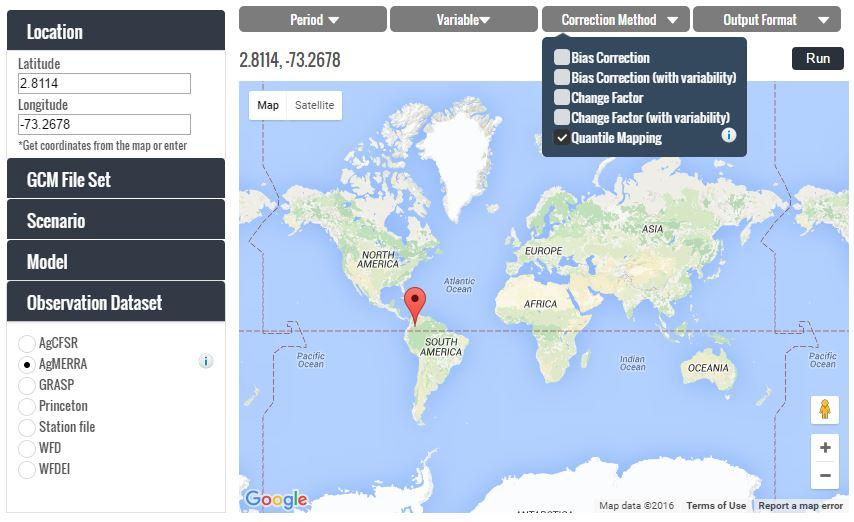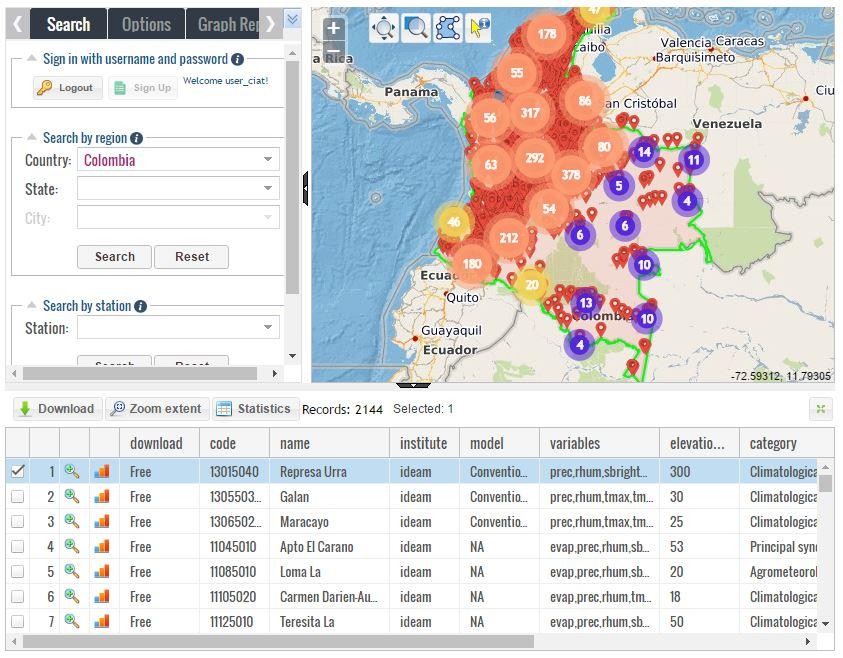New daily climate data for crop growth simulation available
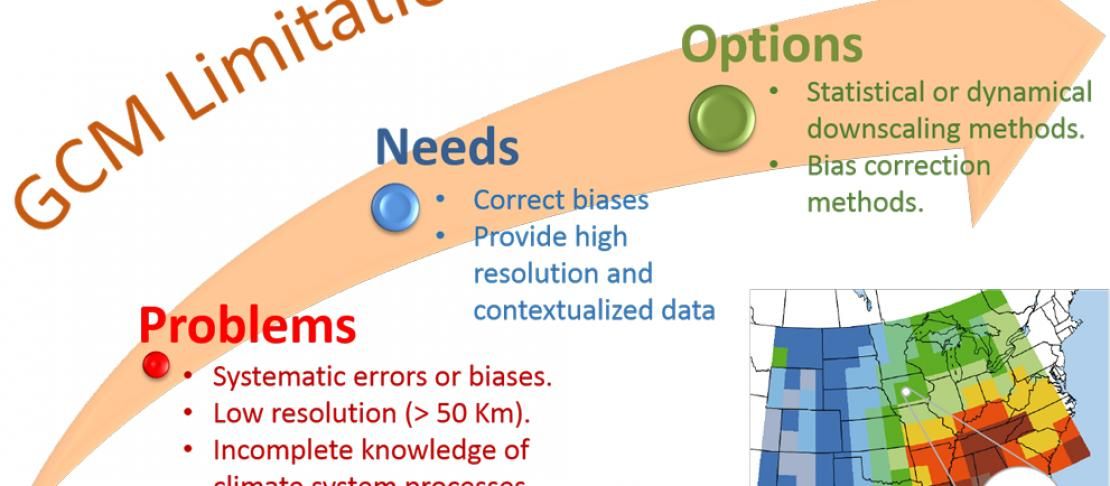
A new interface was developed to query and download future daily bias corrected data for crop growth modeling, which will help improve our understanding of the effects of climate change on agriculture.
Getting and handling future climate information is not always an easy task. Currently, our best tools to understand how the climate is changing are the Global Circulation Models (GCMs). GCM projections are, however, too coarse to assess climate change impacts at local scales. Getting locally-relevant projections is thus a continuous challenge for agricultural modelers looking to understand climate change impacts. To bridge this gap, the CCAFS-Climate portal was developed. CCAFS-Climate now houses global datasets of climate change projections downscaled using several methodologies. Currently hosted data are climatological averages of monthly precipitation and temperatures, and a set of bioclimatic indices mostly useful to ecological niche modelers, and to a variety of stakeholders.
Read more: Data for better understanding the changing climate
CCAFS-Climate now provides daily data for crop modeling, becoming the first and only portal to provide this kind of information
Recently, a new feature in CCAFS-Climate was released especially for crop modelers. This new feature allows modelers around the world to bias-correct, downscale and download daily GCM data for all most recent IPCC scenarios and models, using a variety of methods, for any site across the globe. This makes CCAFS-Climate the only portal providing this kind of information at a global scale.
To make things yet easier for crop modelers, the portal allows downloading the future climate data in the format of common crop models (currently only DSSAT and APSIM). This involved the development of an improved interface for submitting queries of raw GCM data from CMIP5 and processed daily data with several bias-correction methodologies. The tool is constructed on the basis of well-established and documented methods (see below).
Preview of bias correction interface
What is bias correction?
GCMs have systematic errors (biases) or deviations from observational data in their output. These errors can be, in general, due to:
- Limited spatial resolution (50 km in the best case).
- Simplified physics and thermodynamic processes
- Incomplete knowledge of climate system processes
Before GCM outputs are used in crop modeling, errors and biases need to be corrected. The correction of these errors and biases is called “bias correction”. Bias correction methods seek to adjust the long-term mean and variability of GCM simulated outputs using observations as the benchmark (truth) for the correction. In consequence, it is possible, for example, to remove so-called “warm” or “cold” biases, correct the drizzle problem (too many low-magnitude rainfall events as compared to observations) commonly associated to the raw (uncorrected) GCM output.
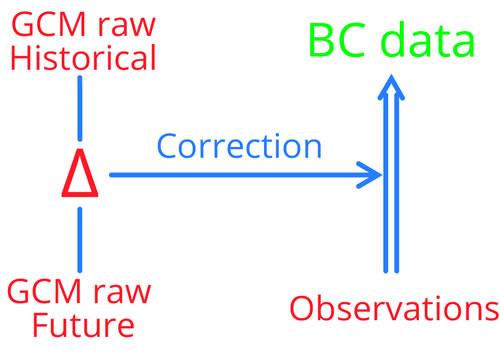
An example of a simple bias correction (BC) method. BC uses raw model output for the future period, and corrects it using the differences (Δ) between historical reference data from the model and observations. Based on Hawkins et al. (2013)
The new CCAFS-Climate bias correction feature interface incorporates three widely used in agricultural and environmental context:
Simple bias correction: Corrects the projected raw daily GCM output using the differences in the mean and variability between GCM and observations in a reference period (Hawkins et al., 2013).
Delta method or change factor: The raw GCM outputs current values are subtracted from the future simulated values, resulting in “climate anomalies” which are then added to the present day observational dataset (Tabor & Williams, 2010).
Quantile mapping: Removes the systematic bias by adding to the observed quantiles both the mean delta change and the individual delta changes in the corresponding quantiles in all statistical moments not only the mean or mean and variance.
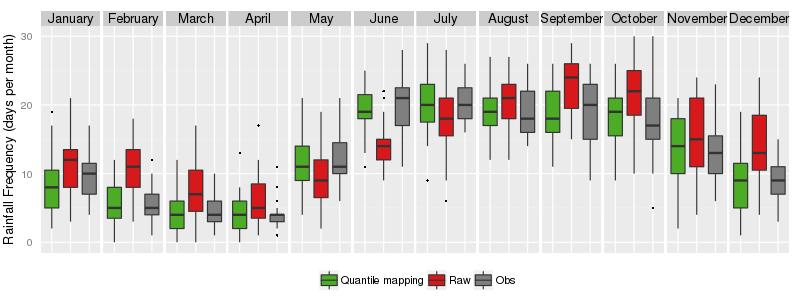
Example of how bias correction approaches can correct biases in GCMs. In this case their application could help to correct the drizzle problem. Note that the green boxes (bias corrected) are more similar to grey boxes (observations) than the red boxes (uncorrected GCM).
New weather stations interface
In addition to the bias correction interface, a new feature was launched to query weather stations data within CCAFS-Climate. For now, the page only contains three weather stations regional networks: Red Cross-Nicaragua, IDEAM-Colombia (only climatological means), USAID-Ethiopia, in addition to data from the Brazilian savannah (provided by Embrapa). In the long run, the idea is for this interface to become a weather station data repository of more CCAFS-related projects.
This platform could help to build alliances between different actors such as meteorological services, academia, governmental and NGO institutions for carrying out studies in the fields of food security, adaptation planning, early warning systems, vulnerability assessment and others.
Preview of weather stations interface
CAUTION: Technical content below
The Bias Correction interface launching includes:
- >1,600 new files for daily CMIP5 data
- 7 datasets based on reanalysis: AgCFSR, AgMERRA, GRASP, NNRP, Princeton, WFD, WFDEI
- 4.78 TB of new data (hosted in our servers): Historical period and 4 RCPs (RCP 2.6, 4.5, 6.5 and 8.5); 31 GCMs (about 26 models per RCP); Available GCM simulations include the 1950–2005 (historical) and 2005–2100 (future) periods; 5 variables (precipitation, maximum temperature, minimum temperature, mean temperature and shortwave solar radiation).
- Outputs data in txt format and statistical plots of comparison GCM BC - GCM RAW, including projected changes, time-series, probability density function (PDF), interannual variability, hot-day frequency and wet-day frequency.
Contact us
For more information please contact us, or:
- Visit the CCAFS-Climate online portal and the bias correction section.
- Read the description of methodologies of bias correction document.
- Download CCAFS-Climate flyer.
Further reading
- Navarro-Racines, C.E., and Tarapues-Montenegro, J.E. 2015. Bias-correction in the CCAFS-Climate Portal: A description of methodologies. Decision and Policy Analysis (DAPA) Research Area. International Center for Tropical Agriculture (CIAT). Cali, Colombia.
- Hawkins, E., Osborne, T. M., Ho, C. K., & Challinor, A. J. (2013). Calibration and bias correction of climate projections for crop modelling: An idealised case study over Europe. Agricultural and Forest Meteorology, 170(0), 19–31. JOUR.
- Tabor, K., & Williams, J. W. (2010). Globally downscaled climate projections for assessing the conservation impacts of climate change. Ecological Applications, 20(2), 554–565. Journal Article.
Carlos Navarro, Jaime Tarapues and Julian Ramirez-Villegas work for CIAT.

